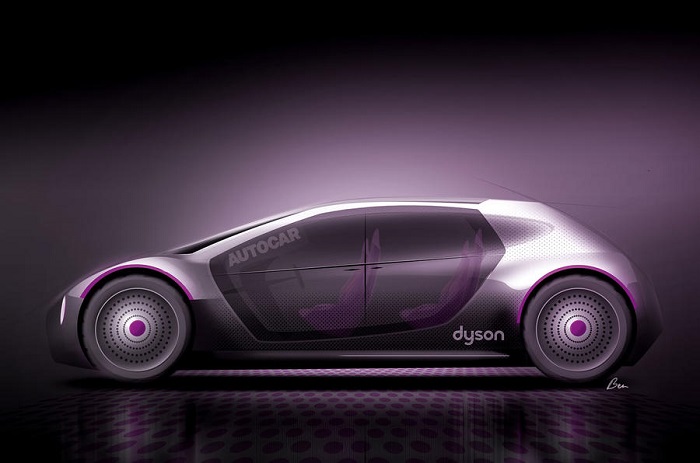Dyson's electric car - our vision of what it will be like
Dyson promises its first car will not be a 'me-too' EV. It will be bold, radical and different. So what, exactly, will it be like?
Khodrocar - Dyson, the innovative UK electrical appliance manufacturer, recently revealed that it is developing a "radically different” electric car that will go on sale in 2020.

The company is investing £2 billion in it and has a development staff of more than 400. Details of the nature of the car itself are scant, though. Sir James Dyson wrote in an email to employees: "Competition for new technology in the automotive industry is fierce and we must do everything we can to keep the specifics of our vehicle confidential.”
Despite this, it’s possible to hazard some idea of what a Dyson electric car might consist of, not least because Dyson himself has said: "There’s no point doing something that looks like everyone else’s. It is not a sports car and not a very cheap car.” On the basis of these not-insubstantial clues and others, Autocar has developed a projection of what the Dyson EV could look like and what features it might contain.
Battery and charging technology
Removable cassette-style solid-state battery pack of various capacities and prices, mounted within double-skinned front bulkhead. Battery pack removable using engine hoist from covered slot forward of windscreen. Battery pack is structural and locks into bulkhead to provide substantial additional torsional strength.
Solid-state battery pack developed by Dyson subsidiary Sakti3. Pack is lighter and more energy dense than lithium ion packs and needs little cooling, further reducing weight and the need for control systems. Pack offered with two different ranges, to suit short and long-distance users, and to offer a lower base price.
Solar roof panel. Solar panels in semi-horizontal rear wheelarches and bonnet, too. Solar panels used to drive HVAC when car is stationary and remotely programmed to warm/cool before usage
Drivetrain and ride
Two Dyson-developed high-power electric motors drive front wheels and double as generator. Smaller motor/ generator for rear wheels to increase power regeneration and provide part-time four- wheel drive.
High-profile tyres for improved ride. Tyres self-coloured in Dyson grey.
Narrow, lightweight wheels reduce weight, inertia, road noise and cost of replacement and improve turning circle.
Exterior and bodywork
Dyson Airblade windscreen clearing system. Heated screen cleared by 400mph air jets with water-injected wash function. Similar system used for rear window.
Composite, self-coloured, non-structural, exterior panels. Skin panels attached to inner frames using Velcro.
Vehicle is lightweight, all-purpose family car of clean, spare and functional design, but not sparse or utility.
Premium finish underlines premium pricing that also provides value through intelligent design.
Car is 4.1m long, 1.75m wide and 1.5m tall.
Five-door with coach rear doors. Completely flat floor.
Overall design shaped by ‘form follows function’ mantra, as with all Dyson products.
Lightweight composite moulded core structure. Bolt-on aluminium front subframe to carry motor, inverter and suspension. Rear suspension subframe mounted to reduce road noise, as per front.
Source: Autocar
Latest News


